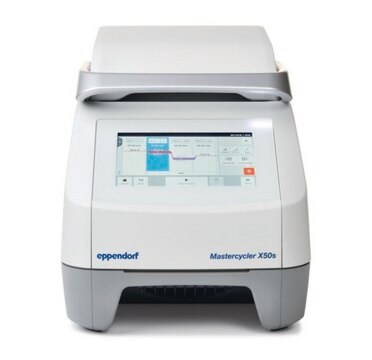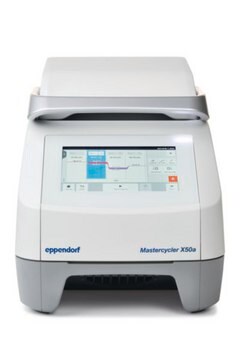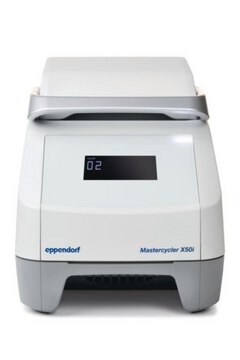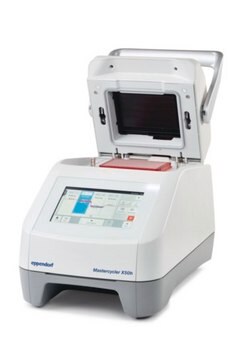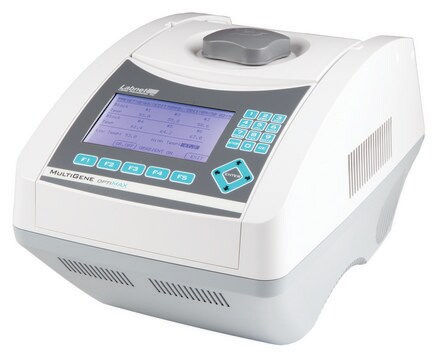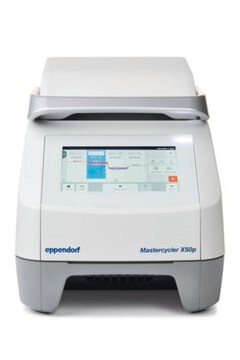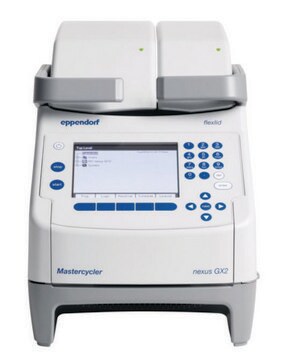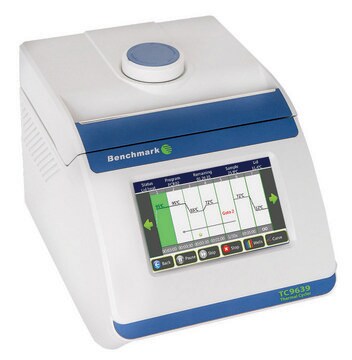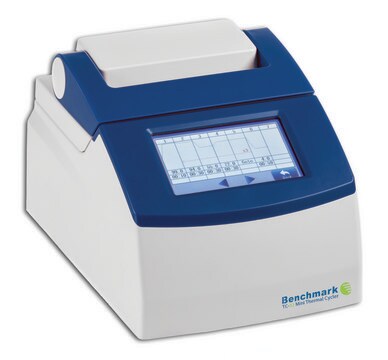EP6306000010
Eppendorf® Mastercycler®
X50t, satellite unit, aluminum block, size 384 wells, high pressure lid, AC/DC input 110 V / 230 V, 50-60 Hz (NA/EU)
About This Item
Polecane produkty
Materiały
aluminum block
Właściwości
high pressure lid
holds 1 PCR plate 8×12
satellite unit
producent / nazwa handlowa
Eppendorf® 6306000010
Parametry
1-30 °C (gradient range)
30-99 °C (gradient temperature)
37-110 °C temp. range
4-99 °C temp. range (control range)
metody
PCR: suitable
szer. × śr. × wys.
27.5 cm × 43 cm × 33 cm
rozmiar
384 wells
masa
10.7 kg
Szukasz podobnych produktów? Odwiedź Przewodnik dotyczący porównywania produktów
Opis ogólny
Speed and enhanced PCR optimization functions, like the 2D-Gradient, make the Eppendorf Mastercycler X50 Thermocycler the ideal PCR cycler for advanced research in molecular biology. The excellent block temperature regulation gives rise to the next stage of PCR reproducibility, whereas the adaptable user management and profound documentation capabilities give peace of mind to laboratories working to specific or strict standards.
A highly intuitive touch display, low noise levels, low power consumption and the versatile flexlid concept combine to make a powerful PCR cycler. Up to 10 PCR cyclers can be combined – ideal for high throughput applications or labs with a high number of users running different assays. Should you feel you need more flexibility or throughput, up to 50 PCR cyclers can be combined in a computer-controlled network.
Product Highlights:
PCR optimization with 2D-Gradient
Denaturation temperature gradient (top to bottom by row)
Annealing temperature gradient (left to right by column)
Faster Heating and Cooling
Heating rate: up to 10°C/ sec. Eppendorf Mastercycler x50 Thermocycler
Cooling rate: 5°C/ sec.
Lid Height Adjusts Automatically
flexlid concept- the automatically adjusts to the heights of plates and tubes; allowing you to use all types of consumables
Color Touchscreen
Informacje prawne
Certyfikaty analizy (CoA)
Poszukaj Certyfikaty analizy (CoA), wpisując numer partii/serii produktów. Numery serii i partii można znaleźć na etykiecie produktu po słowach „seria” lub „partia”.
Masz już ten produkt?
Dokumenty związane z niedawno zakupionymi produktami zostały zamieszczone w Bibliotece dokumentów.
Nasz zespół naukowców ma doświadczenie we wszystkich obszarach badań, w tym w naukach przyrodniczych, materiałoznawstwie, syntezie chemicznej, chromatografii, analityce i wielu innych dziedzinach.
Skontaktuj się z zespołem ds. pomocy technicznej